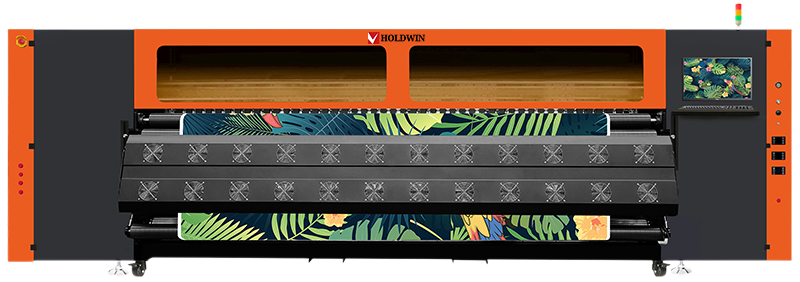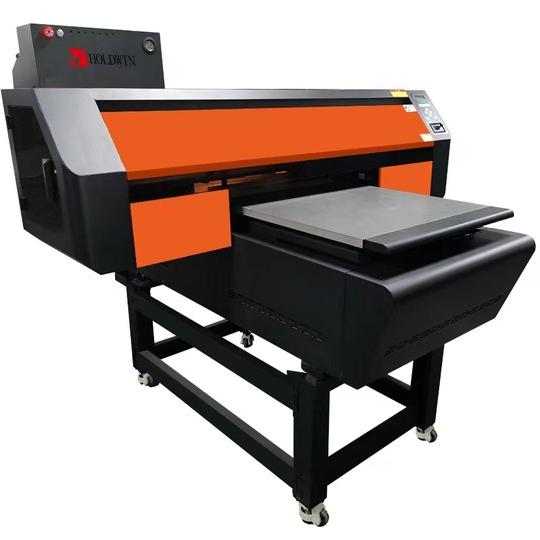
As the textile industry faces increasing pressure to adopt sustainable practices, digital printing technology has emerged as a key player in driving eco-friendly innovations. With its ability to minimize waste, reduce water consumption, and lower energy usage, digital printing is rapidly transforming the way textiles are produced. This article explores the application of digital printing in eco-textiles, highlighting how this cutting-edge technology is not only advancing sustainability but also offering personalized solutions to meet the growing demand for environmentally conscious products.
Eco-textiles, also known as sustainable or green textiles, are fabrics made from renewable or recycled materials, produced with minimal environmental impact. The growing awareness of environmental issues, combined with consumers’ increasing demand for sustainable products, has fueled the rise of eco-textiles in the fashion industry. From organic cotton and bamboo fibers to recycled polyester and hemp, eco-friendly materials are gaining traction across the globe.
The transition toward eco-textiles also reflects a broader shift in manufacturing practices, driven by the desire to reduce carbon footprints, decrease water consumption, and eliminate toxic chemicals. As a result, textile manufacturers are increasingly seeking innovative technologies that align with sustainability goals, and digital printing has proven to be a perfect fit.
Traditional textile printing methods, such as rotary screen printing, consume vast amounts of water to dilute dyes and rinse fabrics. In contrast, digital printing uses significantly less water, making it a more eco-friendly option. Since digital printers apply ink directly to the fabric in a precise manner, they require minimal water for both the application and rinsing processes.
Moreover, digital printing eliminates the need for water-intensive dyeing processes, where excessive water is often used to wash away excess dye. By reducing water usage, digital printing plays a critical role in conserving one of the world’s most valuable resources.

Traditional textile printing techniques are energy-intensive, requiring heat, pressure, and long production times. Digital printing, on the other hand, offers a more energy-efficient alternative. By using advanced inkjet technology, digital printers operate at lower temperatures and require less energy overall. Additionally, the speed and precision of digital printing allow for quicker production times, reducing the amount of energy consumed per unit of fabric printed.
HOLDWIN’s digital printing machines, for example, have been optimized for energy efficiency, ensuring that customers not only save on production costs but also contribute to reducing the overall carbon footprint of their manufacturing processes.

One of the most significant advantages of digital printing is the reduction in waste generation. Traditional printing methods often produce a significant amount of textile waste due to the need for screens, stencils, and excess ink. Additionally, textile manufacturing processes can result in a high level of scrap material, which is often discarded.
Digital printing, however, eliminates the need for screens and stencils, reducing the amount of waste generated. Furthermore, it allows for on-demand production, meaning that only the amount of fabric required for a specific order is printed, minimizing surplus inventory and the associated waste. This “print-on-demand” capability is particularly important for small runs, custom prints, and personalized items, as it ensures that no unnecessary waste is produced.

Sustainability and customization are not mutually exclusive. With digital printing, manufacturers can offer highly personalized products while maintaining eco-friendly practices. Whether it’s creating custom designs for clothing, scarves, towels, or carpets, digital printing allows for intricate, detailed patterns that traditional methods cannot achieve as efficiently.
In addition to the creative flexibility it offers, digital printing also supports sustainability by enabling smaller production runs. Fashion designers and textile manufacturers can print only what is necessary, reducing overproduction and inventory waste. As consumer demand for unique, one-of-a-kind products grows, digital printing provides the ideal solution for fulfilling these desires while aligning with eco-friendly principles.
The future of eco-textiles is closely intertwined with digital printing technology. As environmental concerns continue to grow, textile manufacturers are increasingly turning to digital solutions to meet both consumer and regulatory demands for sustainability. The continued development of eco-friendly inks, such as water-based and UV-curable inks, further enhances the environmental benefits of digital printing.
HOLDWIN is at the forefront of this shift, offering a range of digital printing solutions that support the creation of sustainable textiles. By developing advanced printing machines that integrate seamlessly with eco-friendly production processes, HOLDWIN is helping manufacturers to reduce their environmental impact while meeting the growing demand for sustainable, customized products.
Recent advancements in ink technology have expanded the possibilities of digital printing for eco-textiles. Water-based inks, which are free from harmful solvents and chemicals, are now commonly used in digital printing. These inks not only reduce the environmental impact but also ensure that printed textiles are safe for consumers, with no harmful residues left behind.
UV-curable inks are another innovation that is gaining popularity in eco-textile production. These inks cure instantly under ultraviolet light, eliminating the need for heat and reducing energy consumption. As these technologies continue to evolve, they will further solidify digital printing’s role in sustainable textile production.
Digital printing is revolutionizing the textile industry by offering a more sustainable and customizable alternative to traditional printing methods. Its ability to reduce water and energy consumption, minimize waste, and enable on-demand production makes it an essential technology for eco-textile manufacturers looking to align with sustainability goals.
HOLDWIN, as a global leader in digital printing solutions, is committed to supporting the shift toward eco-friendly textiles by providing innovative, high-performance printers tailored to the needs of modern manufacturers. By integrating sustainability into every step of the production process, from design to delivery, digital printing is paving the way for a more environmentally conscious and customizable future in the textile industry.
“Working with HOLDWIN’s digital printing solutions has transformed the way we approach sustainable fashion. The precision, efficiency, and customization capabilities have not only allowed us to reduce waste but also meet our customers’ increasing demand for personalized, eco-friendly products. We’re proud to be a part of the growing eco-textile movement!”
References

Zhiyu is passionate about good products, good services, and good prices to let consumers know that choosing us is the right choice! For partners and end customers, we will provide one-on-one considerate smart services and provide you with more high-quality procurement solutions.